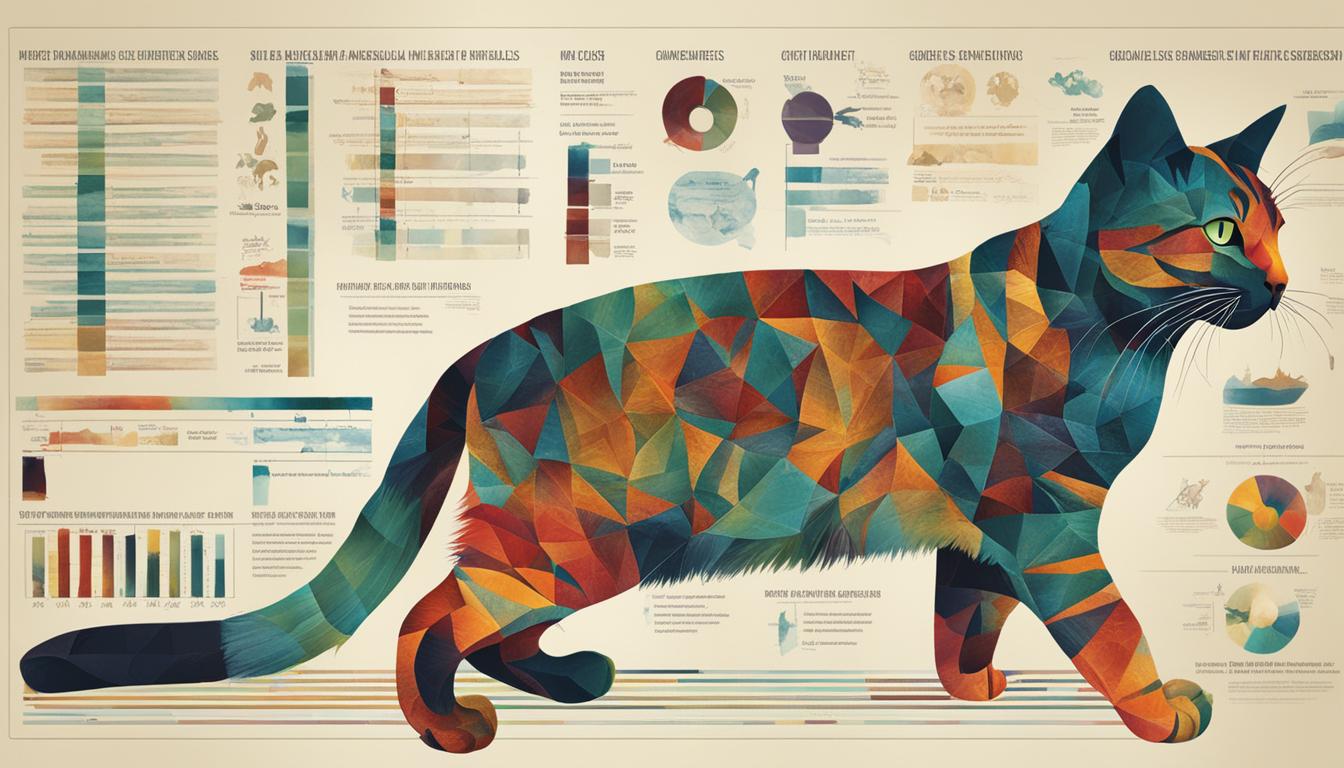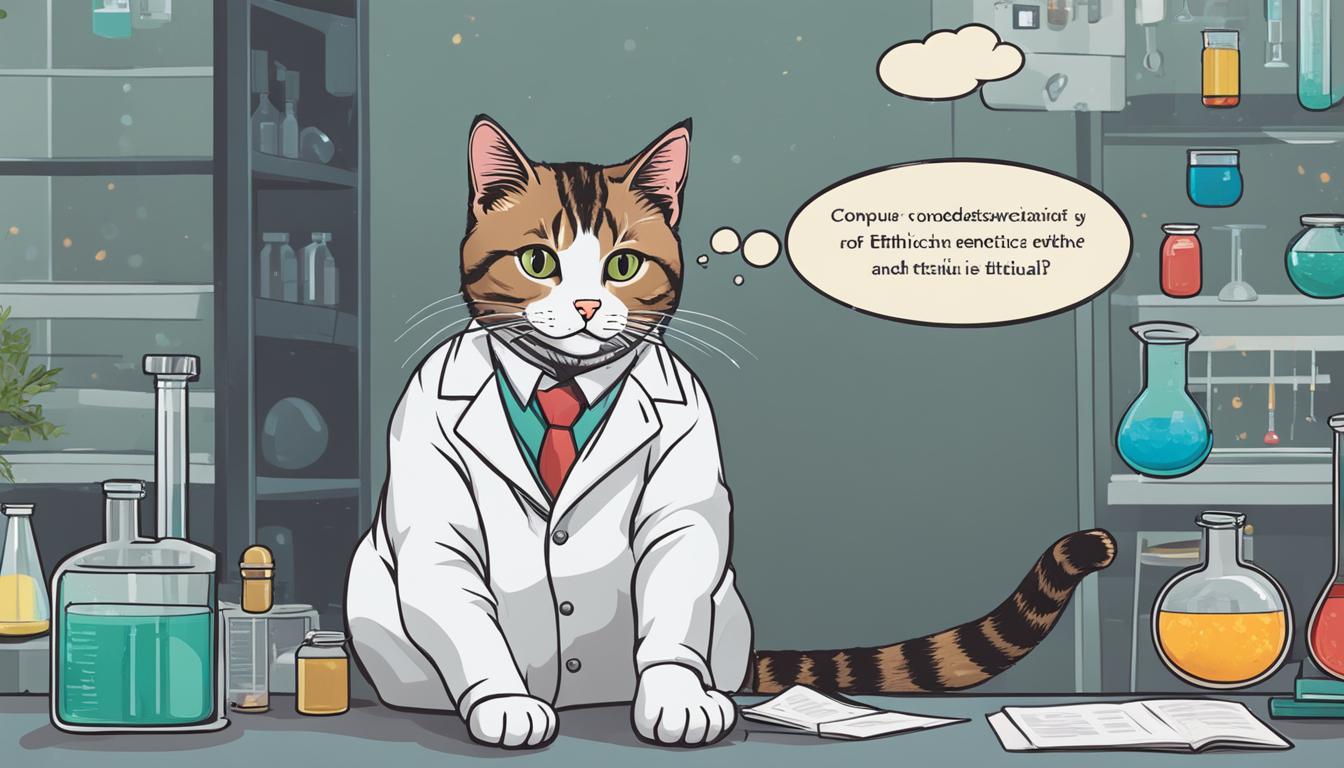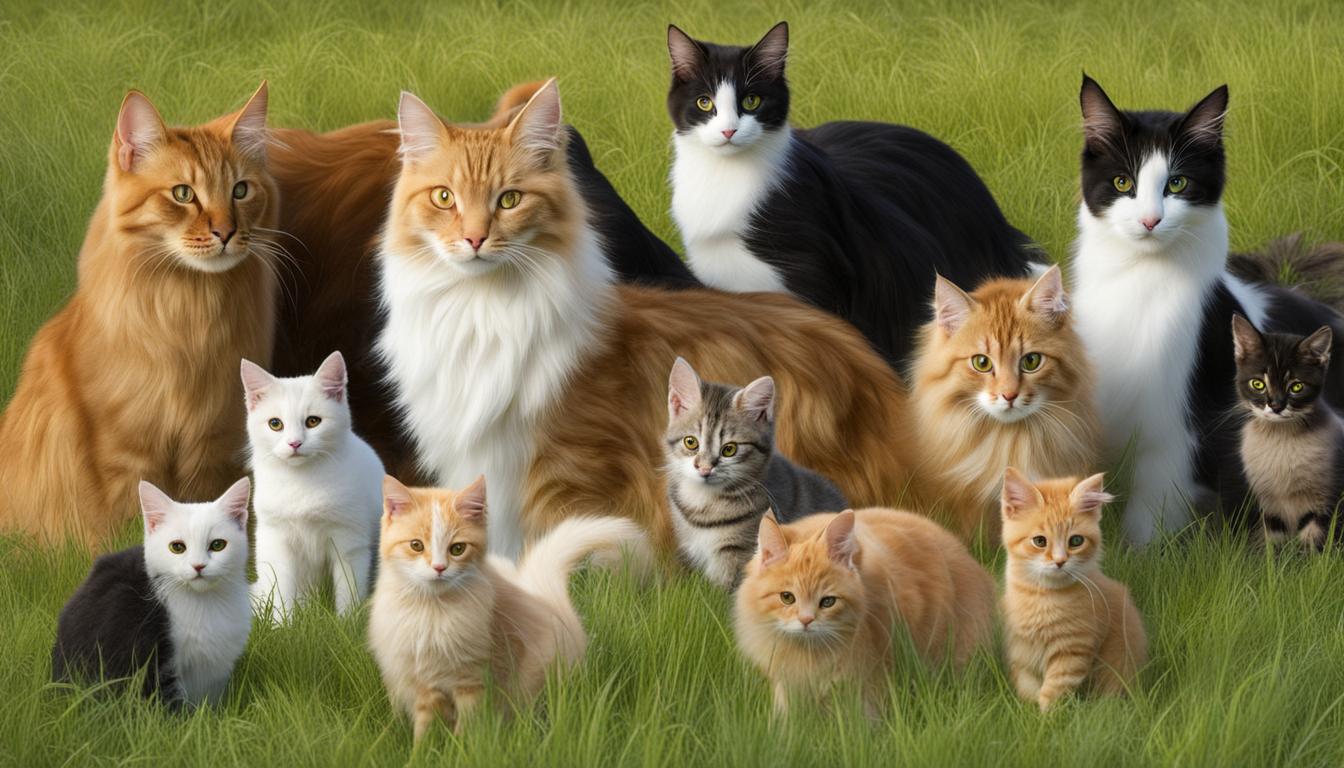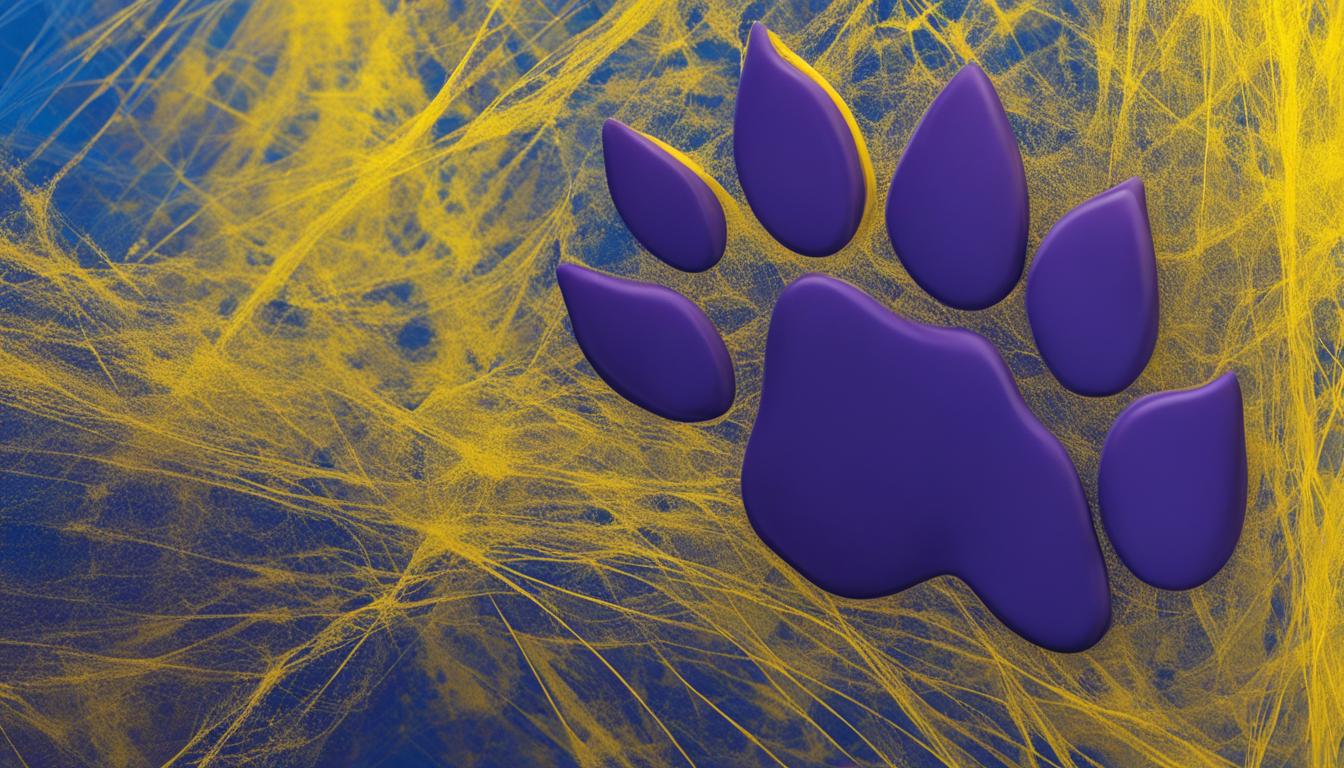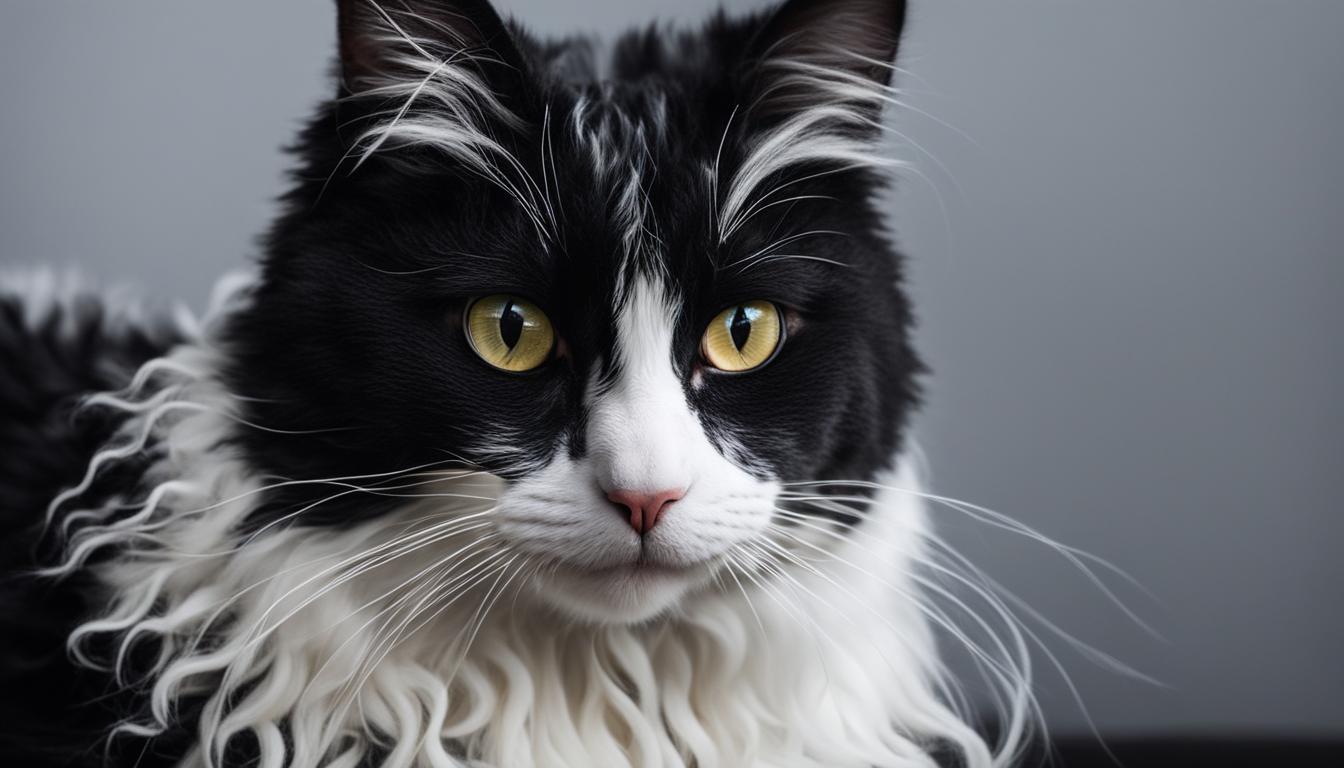As a feline enthusiast, I am always fascinated by the incredible diversity of cat breeds. From the majestic Maine Coon to the mischievous Siamese, each breed possesses its own unique set of characteristics and traits. But have you ever wondered how these distinctive breeds come to be? Well, my fellow cat lovers, let’s dive into the fascinating world of genetic mutations and their role in creating these one-of-a-kind feline companions.
Genetic mutations, those sneaky little alterations in genes, are the driving force behind the creation of unique cat breeds. These mutations can lead to variations in physical appearance, from distinctive coat patterns to adorable quirks like folded ears and bobbed tails. One such intriguing mutation is responsible for the creation of hairless cats, like the famous Sphynx breed.
The Sphynx cat, with its striking hairless body, is the result of a specific genetic mutation that affects the development of hair follicles. While some might find these naked kitties unusual, they have captured the hearts of many cat enthusiasts worldwide. Understanding the genetic causes behind their unique appearance adds an extra layer of curiosity to their already captivating nature.
But the development of unique cat breeds goes beyond their physical traits. Responsible breeding practices and meticulous consideration of the health and well-being of the cats involved are essential factors in this process. While certain mutations may create aesthetically pleasing features, we must always prioritize the overall welfare of our feline friends.
Key Takeaways:
- Mutations play a pivotal role in creating unique cat breeds.
- The Sphynx breed is a result of a genetic mutation affecting hair development.
- Responsible breeding practices are crucial for the health and well-being of cats.
- Genetic mutations can lead to both harmless and potentially harmful variations.
- Understanding the genetic causes behind unique cat breeds adds to their allure.
Variations in Ears and Tails
Cats are known for their diverse and unique physical characteristics, and this extends to their ears and tails. Genetic mutations play a crucial role in creating these variations, showcasing the fascinating complexity of cat genetics. From folded ears to bobbed tails, these distinctive traits add to the allure of different cat breeds.
Folded Ears
One of the most recognizable mutations is folded ears, often associated with the Scottish Fold breed. This genetic variation results in ears that fold forward, giving the cat an adorable and distinctive appearance. However, it is important to note that folded ears can also come with health concerns. The same mutation responsible for the fold can sometimes cause cartilage defects, leading to discomfort or even pain for the cat.
Curled Ears
On the other hand, curled ears, seen in the American Curl breed, have not been found to cause any harmful defects. This genetic mutation gives the cat an elegant and unique look, with the ears curling backward. The curled ears are a gentle reminder of the genetic diversity that exists within the feline world.
Rounded Ears
A more recent discovery in the world of cat genetics is rounded ears. Cats in Italy and Texas have been observed with this intriguing trait. While still being assessed for breed potential, these cats showcase the ongoing exploration of genetic mutations and their impact on feline appearance.
Four Ears
In a fascinating twist, a recessive mutation in cats can sometimes result in the presence of four ears. Although visually captivating, this mutation has been associated with reduced eye size and jaw abnormalities. It serves as a reminder that not all genetic variations are without consequences and highlights the importance of responsible breeding practices.
Bobbed Tails
Bobbed tails, seen in breeds like the Japanese Bobtail and Manx, are caused by different mutations and add to the diversity of feline tail forms. While some mutations can lead to skeletal and organ defects, these breeds have adapted to their bobbed tails without significant health issues. The bobbed tail is a testament to the versatility of feline genetics and their ability to produce distinct traits.
As we delve deeper into the world of cat genetics, we uncover the incredible array of variations that exist in their ears and tails. From folded to curled ears and bobbed tails, these mutations reflect the intricate tapestry of cat genetics. While some mutations come with potential health concerns, others serve as visual reminders of the marvels of nature. Each cat breed’s unique traits are a testament to the underlying genetic diversity and the ongoing exploration of mutations in creating truly distinct feline companions.
| Ear and Tail Variation | Associated Breed | Health Concerns |
|---|---|---|
| Folded Ears | Scottish Fold | Cartilage defects |
| Curled Ears | American Curl | No known defects |
| Rounded Ears | Cats in Italy and Texas | Still being assessed |
| Four Ears | Associated with recessive mutation | Reduced eye size and jaw abnormalities |
| Bobbed Tails | Japanese Bobtail, Manx | Varies by breed |
Variations in Paws and Size
Cats can exhibit fascinating variations in their paws and size due to genetic mutations. These mutations result in unique features that contribute to the diversity of cat breeds.
Syndactylism in Cats
One such mutation is syndactylism, which causes a reduction in the number of toes, giving cats a distinctive “lobster-claw” appearance. Syndactylism is associated with the Split Foot gene, and while it may seem unusual, it doesn’t typically cause any significant health problems for cats. This mutation can be found in various breeds, including the Maine Coon and the Pixiebob.
Polydactylism in Cats
Another intriguing variation is polydactylism, where cats have more than the usual number of toes. Polydactylism can be caused by different dominant and recessive genes. Some cats with this mutation may have extra toes on all four paws, resembling little feline snowshoes. This mutation can be found in several cat breeds, including the Maine Coon, American Shorthair, and Norwegian Forest Cat.
Munchkin Legs in Cats
Munchkin legs are yet another eye-catching genetic variation. Cats with munchkin legs have shorter limbs, giving them a unique appearance. This mutation is caused by a dominant gene but generally does not lead to mobility or spinal problems. Munchkin cats may have a playful and energetic nature, despite their short legs. Breeds like the Munchkin and the Lambkin are known for their adorable stature.
Teacup-sized Persians
Lastly, there are teacup-sized Persians, which are tiny and proportional cats resulting from a dominant germ-cell mutation. These cats are miniature versions of the Persian breed and have gained popularity for their compact size and adorable features.
| Variation | Caused By | Associated Breeds |
|---|---|---|
| Syndactylism | Split Foot gene | Maine Coon, Pixiebob |
| Polydactylism | Different dominant and recessive genes | Maine Coon, American Shorthair, Norwegian Forest Cat |
| Munchkin Legs | Dominant gene | Munchkin, Lambkin |
| Teacup-sized Persians | Dominant germ-cell mutation | Persian |
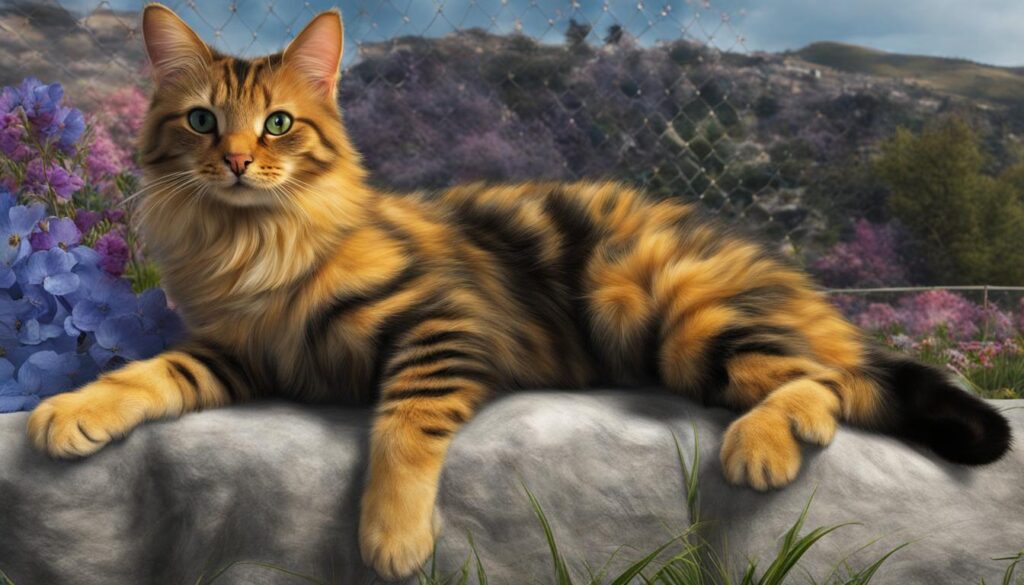
These genetic mutations add to the rich tapestry of cat breeds, showcasing the wonders of nature’s diversity. While some mutations can bring about unique and charming characteristics, it’s essential for breeders to prioritize the overall health and well-being of the cats involved. Responsible breeding practices ensure that these remarkable variations are accompanied by robust health and vitality, enabling cats to thrive and lead happy lives.
Variations in Coat Colors and Patterns
Cat coats are a canvas of beautiful colors and patterns, influenced by genetic variations. These variations give rise to a diverse range of coat colors and patterns that make each cat unique and captivating. From solid colors to intricate patterns, the coat of a cat is a visual representation of its genetic makeup.
The FGF5 gene is responsible for controlling fur length in cats. Some cats have long, luxurious fur, while others have short, sleek coats. This genetic variation in fur length adds to the charm and individuality of each cat. For example, Persian cats are renowned for their long, flowing coats, while the Sphinx breed is known for its hairless appearance.
When it comes to coat colors and patterns, various genes come into play. These genes determine the distribution of color on the cat’s coat, whether it be a solid color, tabby stripes, tortoiseshell patterns, or points. Mutations in these genes can lead to unique color combinations and striking patterns. For instance, the Siamese breed showcases the iconic color-point pattern, while the Bengal breed exhibits a distinctive leopard-like spotted pattern.
Overall, the genetic variations in coat colors and patterns contribute to the allure and fascination of cats. Whether you prefer a cat with a vibrant coat of multiple colors or a sleek, monochrome beauty, there is a cat for everyone’s aesthetic preferences.
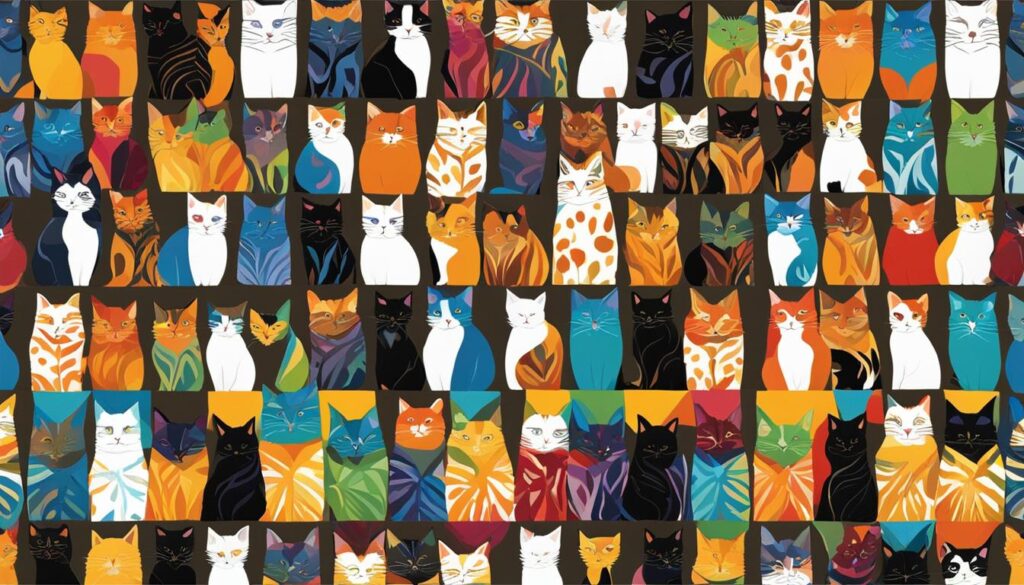
Table: Common Coat Colors and Patterns in Cats
| Coat Color/Pattern | Description |
|---|---|
| Solid | A single uniform color across the entire coat. |
| Tabby | Distinct patterns of stripes, swirls, or spots. |
| Tortoiseshell | Patches of various colors, typically black and orange. |
| Calico | Similar to tortoiseshell, but with the addition of white patches. |
| Color-Point | Dark-colored points (ears, face, paws, and tail) against a pale body. |
| Bi-Color | Two contrasting colors, usually white and another color. |
Table caption: Common coat colors and patterns in cats.
Conclusion
As I wrap up this exploration into the fascinating world of genetic mutations and their role in creating unique cat breeds, I am struck by the delicate balance between innovation and ethical responsibility. It is undeniable that mutations have contributed immensely to the genetic diversity in cat populations, leading to the creation of breeds with extraordinary physical characteristics.
However, we must not overlook the potential health concerns that can arise from breeding practices driven solely by aesthetic traits. While some mutations result in harmless variations, others can result in discomfort, pain, or even serious health issues for the cats involved.
Therefore, it is crucial for breeders to prioritize the overall health and well-being of the cats when engaging in selective breeding. Responsible breeding practices ensure that the genetic diversity is enhanced while minimizing any potential risks to the cats’ health.
In conclusion, mutations in cat breeds are an integral part of the fascinating journey of cat genetics. These mutations have brought about unique and extraordinary physical features that captivate our imagination. However, it is our duty to approach breeding practices with care and consideration, safeguarding the health and happiness of these remarkable feline companions.
FAQ
What are some examples of ear and tail mutations in cats?
Cats can exhibit folded ears, curled ears, rounded ears, and even four ears. They can also have bobbed tails.
Are these mutations harmful to the cats?
Some ear and tail mutations, such as folded ears, can cause cartilage defects and health issues. Others, like curled ears and rounded ears, have not been found to cause harm.
What other variations can occur in a cat’s paws and size?
Cats can have syndactylism (reduced number of toes), polydactylism (extra toes), munchkin legs (short legs), or be teacup-sized Persians.
Do these variations in paws and size cause any health problems?
While munchkin legs do not generally cause mobility or spinal issues, some variations, like syndactylism or polydactylism, can lead to skeletal and organ defects.
Which genes influence coat colors and patterns in cats?
Several genes control different coat colors, patterns, fur length, and texture in cats. For example, the FGF5 gene determines fur length, while other genes determine colors and patterns.
How do genetic mutations contribute to the development of unique cat breeds?
Genetic mutations play a crucial role in creating unique cat breeds and enhancing genetic diversity in cat populations. These mutations lead to variations in physical appearance, including coat colors, patterns, ear shapes, tail shapes, and more.

